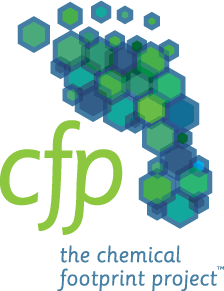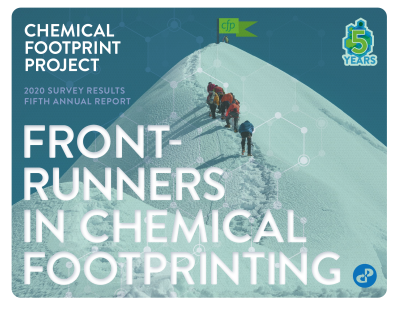New GreenScreen Registry accesses hundreds of chemical hazard assessments
Today the GreenScreen Assessment Registry joins the GreenScreen® family of tools that provide solutions on the journey to safer chemicals, materials, and products. GreenScreen List Translator™ provides a quick pathway to identify thousands of known chemicals of high concern as determined by authoritative lists, such as the European Union’s Candidate List of Substances of Very High Concern and California’s Proposition 65. GreenScreen… …
GreenScreen Certified® -- identifying PFAS-free and preferred products for the health of people and the planet
The per- and polyfluoroalkyl substances (PFAS) chemical class is under intense global scrutiny. From the European Union’s intention to phase out PFAS to individual state PFAS restrictions in the U.S. and the growing commitment by retailers, brands, and purchasers to prohibit PFAS in products – the writing is on the wall for PFAS. Over the last twenty years, awareness has grown about the pervasive nature of these ‘forever chemicals’ and their widespread, and largely… …
Investors are increasingly scrutinizing companies for environmental, social and ethical considerations. In addition to closer scrutiny of companies’ carbon and water footprints, a third mark of consideration is emerging: their chemical footprint. In recent years, consumer demand for the responsible use of chemicals in products has grown exponentially. This is evidenced by consumer pressure for ingredient transparency, calls to remove hazardous chemicals from personal care products, and… …
Sign up for chemical footprint survey & see retailer progress in chemical footprinting
The Chemical Footprint Project 2021 Survey will be launched on April 15th, and we thought it a good idea to remind companies how the four interlinked pillars in the CFP Survey can help companies reduce their chemical footprint. And why this is more important than ever. News of the impact on human health of the use of chemicals in products and manufacturing processes continues unabated. Published in February, Count Down, by Shanna Swan and Stacey Colino, documents how chemicals in… …
5th Annual Chemical Footprint Project Report features best practices in proactive chemicals management by Beautycounter, Herman Miller, HP Inc., Humanscale, Naturepedic, RB (Reckitt Benckiser), & Seventh Generation Somerville, MA – Today Clean Production Action Released the 5th Annual Chemical Footprint Project (CFP) Report analyzing the results of the CFP 2020 Survey. The Survey evaluates and benchmarks participating companies on their progress to best practices in… …
2020 in the rearview mirror
In the midst of a global pandemic, the team at Clean Production Action continued to bend the course of the toxic chemicals economy to safer solutions. We transitioned to a completely virtual organization, ceased all travel, yet continued to move markets to safer chemicals. Impacts of our 2020 work included: Working to replace PFAS, the “forever chemicals,” with safer alternatives in Firefighting Foam, Furniture & Fabrics, and Food Service Ware Raising demand for… …
"Three years ago, the Department of Materials Design and Innovation at the University at Buffalo, Clean Production Action (CPA) and Niagara Share created the Collaboratory for a Regenerative Economy (CoRE). CoRE recognizes the critical societal importance of scaling clean energy technologies such as solar to address the climate crisis. But to do this sustainably, we need to collectively scale solutions to reduce the use of toxic chemicals and scarce, unrecyclable materials that impede circular… …
GreenScreen trainings open for registration
Learn all the elements of hazard assessment as defined by GreenScreen. Start with Advanced Topics and progress to being a Practitioner. If you are new to GreenScreen, check out the Introductory Course. Register for Advanced Topics at https://www.greenscreenchemicals.org/learn/advanced-courses - limited space, register now Apply for Practitioner Program at https://www.greenscreenchemicals.org/learn/certified-practitioner-program … …
Meeting the demand for renewable energy with safer materials
Meeting the challenge of global climate change requires significant new investments in renewable energy. Yet the renewable energy economy depends on toxic chemicals. Lead in solar panels. Cadmium telluride in solar cells. Hydrofluoric acid in manufacturing operations. Are all examples of toxic chemicals in the solar energy economy. From decades of experience in pollution prevention and clean production, we know the most efficient and effective pathway for managing toxic… …
Clean energy is critical to solving our climate crisis. But we need to consider the full environmental and human health impacts of solar energy generation across its entire lifecycle, including mining, manufacturing, use, decommissioning and recycling.
In 2017, the Department of Materials Design and Innovation at the University of Buffalo, Clean Production Action, and Niagara Share created the Collaboratory for a Regenerative Environment (CoRE). CoRE brings together academic experts in materials design with entrepreneurial nonprofit organizations to accelerate clean production and sustainable materials in the renewable energy economy. Our innovative collaborations and data-driven tools enable business, government, and nonprofit leaders to… …







